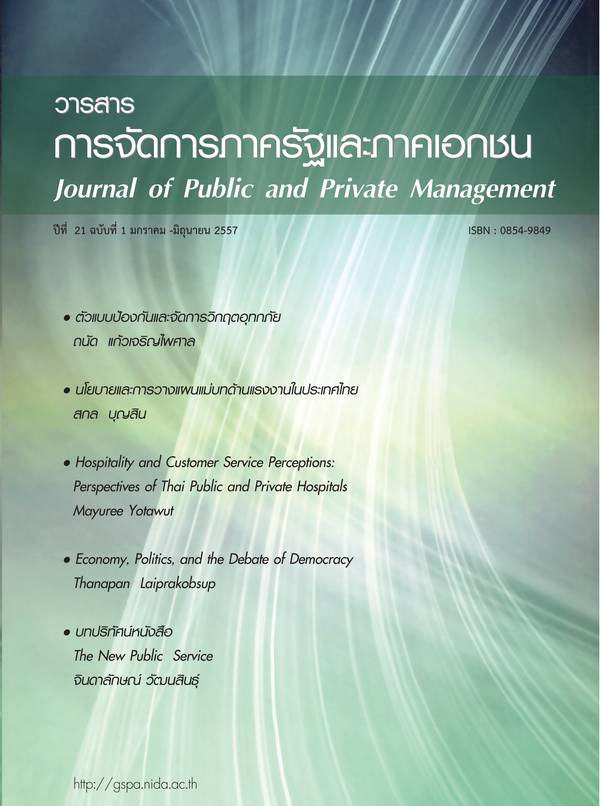A Model for Flood Crisis Management and Protection
Keywords:
model, flood, management, crisis, warning, communicationAbstract
The objectives of this dissertation are to study the physical characteristics that affect flooding, the nature and effect of the flood, the Buddhist principles, theories and concepts related to flood protection, and to develop a model for flood protection of Nakhonsawan province. This study was conducted as a qualitative research project that was using several methods including field surveys, documentary study, seminars, focus group discussions and in-depth interviews. The key informants were Nakhonsawan administrators and key stakeholders in the area.
The physical characteristics of Nakhonsawan are somewhat unique with the Ping, Wang, Yom, and Nan rivers joining together to form the Chaopraya river. Deteriorated watersheds and poorly maintained ditches, canals, riverbeds, together with nearly doubled volumes of rainwater from continuous heavy rainfall over an extended period of time have been identified as main causes of the 2011 flood. The 2011 flood affected in 15 districts 99 sub-districts 968 villages and throughout Nakhonsawan, resulting in economic and social damage not only in this province, but also in a number of downstream areas. Estimates show the number of affected people at over 12.8 million and total damages at 1.44 trillion Baht. No environmental impact assessments have been conducted and no standard of environment management systems have been implemented.
This study uses a number of theoretical concepts from different fields to create a systematic theoretical framework. The authors propose an integrated model for effective crisis management and flood protection that consists of a total of 10 sub models in 3 phases. The first phase consists of 3 sub models:- 1.1) the crisis warning model 1.2) the crisis water traffic controlling model and 1.3) the integrity model for nature ecosystem. The second phase consists of 4 sub models :- 2.1) the crisis management policy and incident action plan 2.2) the crisis organizational structure model 2.3) the crisis communication and coordination model and 2.4) the crisis financial management model. The last phase comprises 3 sub models:- 3.1) the crisis infra structure model for flood protection 3.2) the management model of the crisis shelters for flood victims and 3.3) the crisis traffic and transportation management model.



